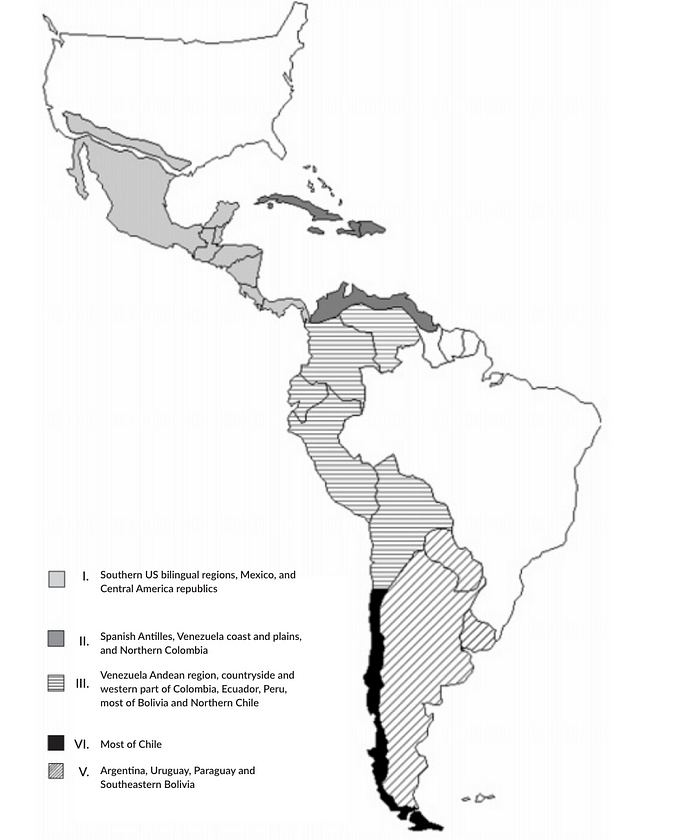
The Various Types of Spanish and the Translation Industry
By Marcos Chiquetto
Marie used to be an English > French translator. Last month, she started working as a project manager at a multilingual agency.
An inquiry arrives from WYZ, a client of the agency:
− Can you do a marketing translation from English to Spanish, for Argentina?
Marie takes a look at the roster of available English>Spanish translators: there are professionals from the US, Spain, Colombia and Cuba. No Argentinians.
Marie thinks:
− Well, I don´t have a translator from Argentina, but I have professionals from Colombia and Cuba. They are Latin Americans like the Argentinians. I suppose any one of them can do the job.
She sends the answer to the client´s inquiry:
− Yes. We can do the job.
The client sends the English original and Marie chooses the Cuban professional. Everything runs smoothly. Within a few days Marie delivers the translation.
A few days later the XYZ manager calls Marie:
− Hello Marie. Are you sure the professional who worked on our translation is Argentinian?
− Well. Actually, he is not Argentinian, but he is from Latin America. Have you had any problem with the translation?
− Yes, I have a problem. Our local manager in Argentina says this translation is not right:
Your printer. Your colors. Your life. You choose.
Tu impresora. Tus colores. Tu vida. Tú eliges.
− They say the correct translation for the marketing context would be this:
Tu impresora. Tus colores. Tu vida. Vos elegís.
− They also say this was damaging to the image of the company in Argentina.
Let´s take a break here.
What was the problem? Why was the sentence as it was delivered wrong for Argentina?
The problem is that when the singular pronoun “you” is translated into Latin American Spanish, it can be “tú” or “vos” if the tone is informal, or “usted” if it´s formal. Most Spanish-speaking countries use “tú” in normal conversation, but in Argentina (as well as in Uruguay and Costa Rica), the informal pronoun is “vos”.
The translation was considered incorrect because the translator used “tú” in the last sentence, instead of “vos” (and the corresponding verb conjugation “eliges” instead of “elegís”). The inexperienced project manager didn´t make it clear to the translator that the job was targeted specifically for Argentina, and the result led to a cultural dissonance.
The fact is that Spanish has many flavors around the world.
− And what are those flavors?
Well, the first broad division is between Spain and America, because different words are used in each region for similar concepts, such as “ratón” in Spain and “mouse” in Latin America for the computer device, or “vosotros” in Spain and “ustedes” in Latin America for the informal plural of “you”. To cope with these differences, the first variation of Spanish established by the translation industry is “Spanish for Spain”.
As for the Spanish for America, let me cite the categorization proposed by Henríquez Ureña, included by Francisco Moreno Fernández in his book “Qué español enseñar”, shown in the map below:

(Henríquez Ureña, in “Qué español enseñar” by Francisco Moreno Fernández)
It is a complex reality. And there is a strong demand from the global market for acceptable translations into Spanish. How do we deal with it?
First, the type of translation is to be considered. Cultural-heavy material, involving marketing, food, clothes, local celebrations, etc. poses a more difficult challenge when compared to so-called general translations (such as technical material or news).
Regarding general translations, the industry has been working with so-called “LA Spanish”, which is a relatively neutral Spanish that can be properly understood across all Latin America, even though it may sound a bit odd in some countries. For instance, LA Spanish uses “tú” for the singular “you”, so it may sound awkward in Argentina, but it will not prevent the translation from being understood in that country. LA Spanish is assumed to be accurately understood across all Latin America.
However, when it comes to the decimal notation for numbers, there is an important discrepancy: most people in region I of the map above (US and Mexico, specifically) write numbers using the English notation, which is different from the Spanish notation. For instance, “one thousand dollars” in Spanish is “USD 1000,00”, but US-resident Spanish speakers and Mexicans use the English decimal notation “USD 1,000.00”, which can lead to serious mistakes involving quantities. For this reason, and due to the higher presence of English words in that Spanish variant, the industry operates with a separate category for Latin America, called “US-Spanish.”
In short, to cope with general translation, a translation agency must at least have translators for “Spain”, “Latin America” and “US” Spanish.
Still considering general translations, there is also a demand that arises from the opposite side of the segmentation issue: sometimes the target readers are Spanish native speakers from all over the world. In such cases, the target language must be the so-called International/Worldwide Spanish, which uses a vocabulary that everyone will understand, no matter how odd it may sound.
Regarding cultural-heavy material, the best option is a translator who is a native of the target country or from the same language region. According to the map provided above, for example, a Uruguayan professional can certainly take on a job targeting Argentina, a Mexican translator can be assigned a job targeting the US, and so on. Another, more feasible, solution is to deploy a seasoned high-level professional who will be able to translate for a certain region even if she or he was not born there, based on her or his experience and in the research into style and terminology carried out. But the agency must make it clear to the client that the translator is not a native speaker of the target country and provide some background information about the professional’s qualifications and experience. If the client agrees with the proposed solution, the agency can then proceed with the work.
There is another possible course of action for cultural-heavy material: the client can order an LA Spanish translation and then have the text reviewed by an in-country resource to make any necessary adaptations to the language.
Well, this is a complex subject. And as happens in most complex situations, the present discussion involves some simplification of the real-world issues. However, I hope it can help professionals in the translation industry make sound decisions when working with jobs targeting Spanish.
Marcos Chiquetto is an engineer, physics teacher, translator, and writer. He is the director of LatinLanguages, a Brazilian translation agency specialized in providing multilingual companies with translation into Portuguese and Spanish.
Source: Qué español enseñar, Francisco Moreno Fernández, 2ª edición actualizada, 2007, Arco Libros
